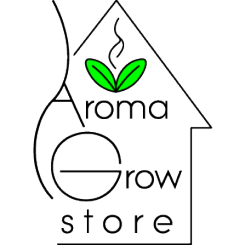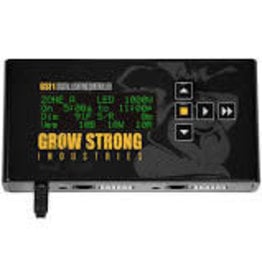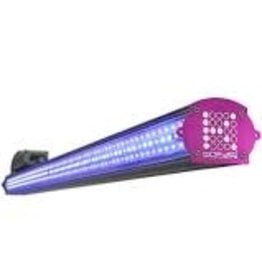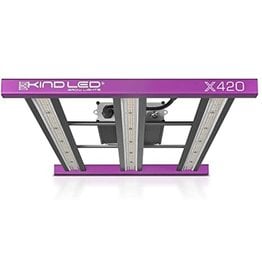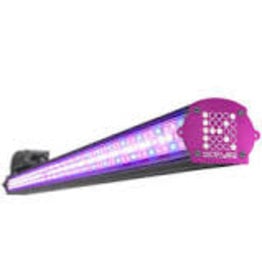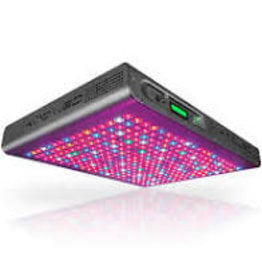Kind Lighting
Kind LED Grow Lights
Kind LED is the industry leader in targeted full spectrum LED grow lights. We've consulted with hundreds of professional hydroponic and soil growers to rigorously research and develop our cutting-edge LED technology which has since revolutionized the indoor growing industry. Kind LEDs are widely considered the best fixtures for indoor gardening on the market today.
The Kind LED Story
In 2014, Kind LED set out to prove once and for all that LED fixtures were the future of horticultural lighting. To call it an audacious endeavor would be an understatement, as there was little faith in LED technology at the time. But as we soon discovered, LED fixtures are not only capable of producing incredible yields, they can produce bigger, higher-quality yields than growers previously thought possible. Since then, we have dedicated ourselves to constant innovation, and helping growers everywhere improve their yields while saving money and helping the environment. To grow the best, grow WITH the best!
Because your Plants Should Always Come First
In the past few years, the industry has seen a huge surge in popularity of white-light LED grow lights, primarily due to extensive marketing efforts intended to downplay the shortcomings of these fixtures. White-light LED fixtures use readily available white diodes manufactured for countless uses in every imaginable industry.
These diodes include a large amount of green and yellow light—and while these spectrums play a vital role in plant development, the amount produced by white light LED manufacturers far exceeds the amount a plant can actually absorb. In fact, more than 50% of green and yellow light winds up reflected from the plant’s surface. That wasted energy gets turned into heat, raising the temperature of the grow environment. This heat can have a detrimental effect on plants, potentially damaging trichome production, and forces the grower to invest money in additional cooling equipment and increase their watering schedules.
This is where Kind LED's targeted full spectrum grow lights come into play. We utilize light science to produce only the wavelengths of light that most benefit plant growth while avoiding the wastefulness that plagues the white-light LED market. Kind LED saves growers money while improving their yields, guaranteed.
Efficacy in LED Grow Lights
Glossary:
PAR (Photosynthetically Active Radiation):
PAR refers to the spectral range of light radiation within the visible range of light which supports photosynthesis, between 400 to 700 nanometers.
PPF (Photosynthetic Photon Flux):
PPF refers to the total amount of photons within the PAR range produced by a lighting fixture each second. This is expressed in micromoles per second (μmol/second).
PPFD (Photosynthetic Photon Flux Density):
PPFD is a measurement of usable photons which reaches one square meter of a given surface every second, and is measured in micromoles per square meter per second (μmol/m2/s). Whereas PPF is a measurement of the total amount of photons produced by a light, PPFD is essentially a spot measurement.
Efficacy (Photon Efficacy):
Efficacy is a measurement of how effective a grow light is at converting electrical energy into photosynthetically active radiation. This is calculated by taking the PPF value and dividing it by the measurement of wattage (Joules per second). Therefore, efficacy measures exactly how much usable light a fixture produces every second per watt used. (µmol/J)
Efficacy is not the same as efficiency
White-light LED companies have recently taken to claiming that above all, efficacy is the most important feature of a lighting fixture, some going so far as to boast the efficacy of a single diode, not the entire fixture. They claim a fixture’s spectral quality is secondary to efficacy, and warn against companies that claim their spectrum is specifically tuned for the benefit of plants. However, this is a false assertion and a deliberate misrepresentation of the numbers to mislead consumers.
Efficacy represents a light’s capacity for turning electrical energy into photons, and is merely a measurement of how many photons within the PAR range a fixture emits per second. But since not all light within 400 to 700 nanometers is used by a plant in equal amounts, a light’s spectrum is vital to the growth of plants. It’s become well known that blue light is the most important part of the light spectrum for vegetative growth, while red light is ideal for the flowering cycle. For this reason, reputable LED grow light manufacturers engineer their spectrum to focus on the parts of the spectrum that most benefit plants, not humans.
White-light LEDs produce a large amount of green and yellow light. While these spectrums play a vital role in plant development, they are effective in considerably smaller amounts than red and blue light. Thus the ratio of light spectrum becomes very important. The amount produced by white light LED manufacturers far exceed the amount a plant can actually absorb, and more than 50% of that light is merely reflected from the plant’s surface, increasing the temperature of the grow environment.

White Light LED Spectrum
Studies have shown that a low percentage of green light (≤ 24%) actually enhances plant growth, whereas plant growth is inhibited under a higher percentage of green light. Furthermore, green light has been proven to have an antagonistic effect on THC levels. When we look at the above spectrum, we can see that a large percentage of the fixture’s energy is devoted to light within the 500-600nm range. The vast majority of this energy will be wasted, as it will not do much to help with the growth of the plant.
A white-light LED with a great efficacy value can flood a plant with a ton of photons, and the plant will do well enough, however there will be a considerable amount of energy wasted in order to produce that growth. A plant can only absorb so many photons, and they are not absorbed in equal amounts. The vast majority of green and yellow photons will wind up wasted as heat. A fixture with a lower efficacy value and an optimized spectrum with the ideal amount of green and yellow light can provide superior results with considerably less wasted energy.
